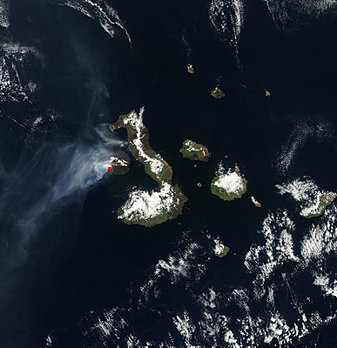
Fernandina in the Galapagos erupting in April 2009. Image courtesy of NASA.
The latest reports about the ongoing eruption at Fernandina are both coming and going. Reports from officials in the Galapagos National Park suggest that the eruption was become more intense (in spanish), while later reports from the Geophysical Institute in Ecuador say that the eruption is waning. Both reports might be true and reflect the volatile nature of the eruption, but overall it seems that the wildlife (that probably is used to this sort of thing anyway) hasn't been effected too much by the eruption.
More like this
The eruption at Eyjafjallajökull-Fimmvörduháls continues on - the explosive spatter and bomb eruptions at the new central vent (on the second fissure) were
The fissure vent eruption on Eyjafjallajokull in Iceland on March 21, 2010.
Great, great, great and - did I forget something? Oh, yeah: Great! thanks for sharing that with us. BTW: I'm typing this on my new iphone - cool...